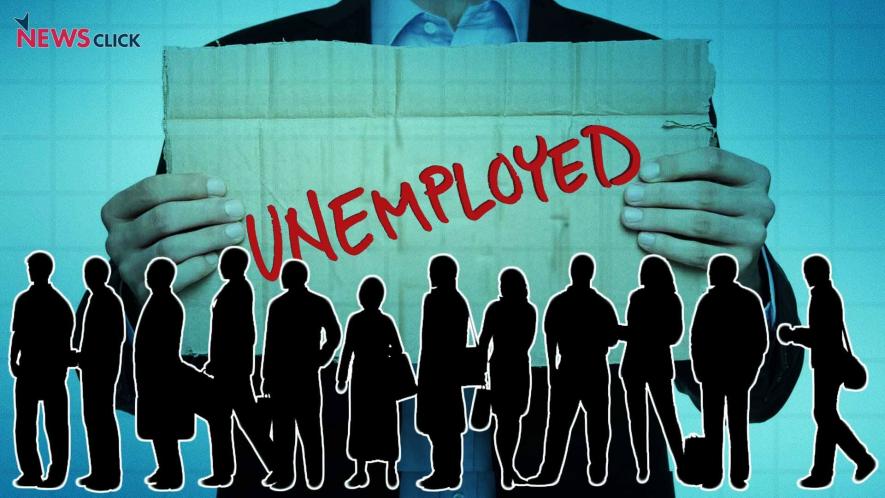Protecting Employment and Creating Jobs Matters the Most

The spectre of unemployment is stalking the country. After the pandemic broke out and the hasty lockdown, millions lost their jobs in industry, small businesses, service sector and, above all, in informal sector.
Even prior to the COVID-lockdown, unemployment had grown tremendously.
Demonetisation and the implementation of the GST had affected petty producers and small enterprises leading to a steep rise in unemployment. The 2017-18 Periodic Labour Force Survey (PLFS), which the government tried to suppress, showed that the unemployment rate had increased to a level that was unprecedented in the last five decades. The 2018-19 PLFS data showed a similar picture.
Even after the lifting of the lockdown and some revival of economic activities, it has not led to most of the jobs being restored; the level of employment is far below the pre-Covid level.
In 2019, the National Sample Survey Organisation (NSSO) also did a time-use survey. Figures from this survey are even more damning. In 2019, in the age group 15 to 59 years, only 67 per cent of rural men, 21 per cent of rural women, 71 per cent of urban men and 19 per cent of urban women participated in remunerative work.
The situation in respect of employment worsened since the lockdown imposed in the last week of March. Even after the lifting of the lockdown and some revival of economic activities, it has not led to most of the jobs being restored; the level of employment is far below the pre-Covid level.
The Centre for Monitoring Indian Economy (CMIE), a private survey organisation, has been conducting national surveys on employment conditions. The sample used for CMIE surveys has very low representation of informal sector workers. As a result, CMIE surveys underestimate the problem of unemployment and overestimate the extent of recovery after the lockdown was lifted.
Despite this, the latest CMIE monthly data shows rural unemployment rate at 6.9 per cent and the national unemployment rate at 6.89 per cent in October. The initial surge in MNREGA workdays after the lockdown was lifted has petered out. There were only 173 million person-days of work in the month of October compared to 265 million person-days in September.
Widespread unemployment is leading to increasing distress for tens of thousands of families.
Without a steady income, they cannot avail medical care; cannot send their children to school or, even meet the food expenses of the family. The suicide rate of daily wagers, had risen in 2019, according to the NCRB. The job losses in 2020 would have aggravated the problem.
But the Modi government has been callous and uncaring in its approach to this acute problem.
The meagre fiscal stimulus has hampered the revival of livelihoods and job creation. The government has failed to provide cash transfers as a form of income support to those who have suffered loss of livelihood. There are lakhs of vacancies in the government and quasi-government bodies which are not being filled up.
The current Bihar election campaign has shown the importance of jobs for the people. The promise of 10 lakh government jobs by the Mahagatbandhan has met with a big response, particularly from the youth, cutting across all castes and communities.
Without a steady income, they cannot avail medical care; cannot send their children to school or, even meet the food expenses of the family.
Irrespective of what the election result will be, the Bihar election campaign has thrown into sharp focus the need for job creation.
It is, therefore, necessary to take up the fight against unemployment as a priority.
The youth movement will, of course, have to play a prominent role in the movement for employment. However, this is a much wider issue which should draw in other organisations of the working people, trade unions, agricultural workers and rural workers organisations, students and women’s movements.
It should be remembered that a large number of unemployed belong to the working class, both in urban and rural areas. They should be mobilised.
The fight for employment vitally concerns women, the bulk of whom are out of the employment orbit.
Students, who are the educated youth, face a bleak future as far as gainful employment is concerned. All these sections have to be brought into the struggle for employment.
The united struggle should focus on the State providing unemployment allowance to all jobless people.
The youth movement will, of course, have to play a prominent role in the movement for employment.
The demand for income support of Rs 7,500 a month for all non-income tax payees is a connected demand. There has to be an urban employment guarantee scheme. MNREGA needs to be expanded to at least 200 days of work a year with enhanced wages.
Given the huge food stocks available, the free distribution of foodgrains has to continued beyond November.
There has to be enhanced public investment in agriculture and infrastructure to create employment. Finally, both the central and state governments should fill up the vacant posts in various departments and State enterprises on a war-footing. (IPA)
(Prakash Karat is a CPI(M) leader. Views are personal.)
Originally Published in The Leaflet
Get the latest reports & analysis with people's perspective on Protests, movements & deep analytical videos, discussions of the current affairs in your Telegram app. Subscribe to NewsClick's Telegram channel & get Real-Time updates on stories, as they get published on our website.
























